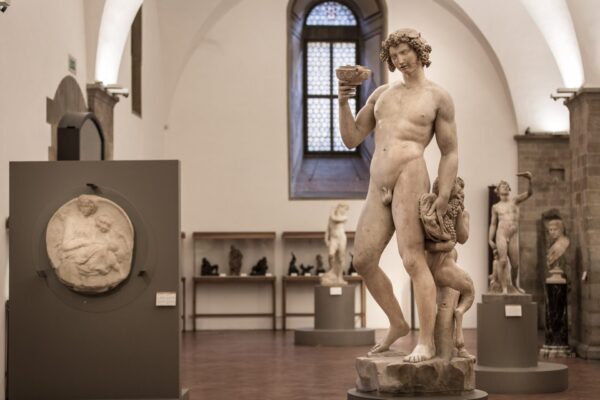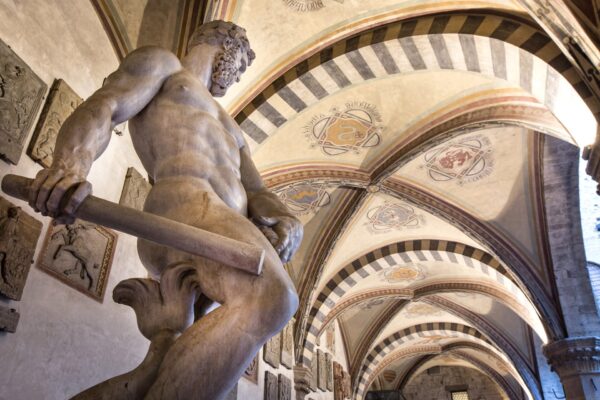Museo Nazionale del Bargello
The Museo Nazionale del Bargello is a breath away from Piazza della Signoria. It sits on Via del Proconsolo 4, in the ancient Palazzo Podestà of Florence that, royally decreed on June 22, 1865, became the first National Italian Museum dedicated to Medieval and Renaissance art.
During that same year, the most important Renaissance sculptures were brought to the Palazzo, including masterpieces by Donatello, Luca della Robbia, Verrocchio, Michelangelo, and Cellini, most of which came from the Medici grand-ducal collection. The museum is also enriched with superb examples of bronzes, majolica, waxes, glazed pottery, medals, ivories, tapestries, seals, and textiles, also from the Medici collection, convents, and private collections.
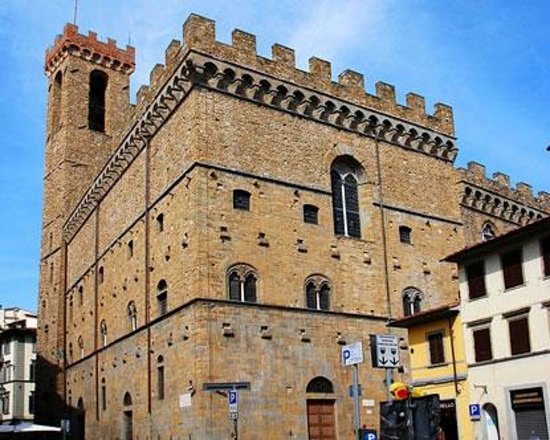

Among the most notable legacies is the donation of Louis Carrand, an antiquarian from Lyons, who in 1888 gave his extensive collection of over 2500 works of decorative arts and paintings to the Bargello. The Museum contains three levels: on the ground floor, you can admire the fascinating view of both the courtyard and the Michelangelo Room with sculptures by Michelangelo, Cellini, Giambologna, and Ammannati.
On the first floor, you will find the impressive Donatello Room, with the most famous works by the Florentine artist (David, Attis, Saint George, Marzocco), majolica works by Luca della Robbia, and bronze plaques by Ghiberti and Brunelleschi; on the same level are various rooms including the Islamic Art Room, the Chapel (with the oldest portrait of Dante Alighieri), the Ivory Room, the Thirteenth-Century Room, and the Room of Italian Majolica.
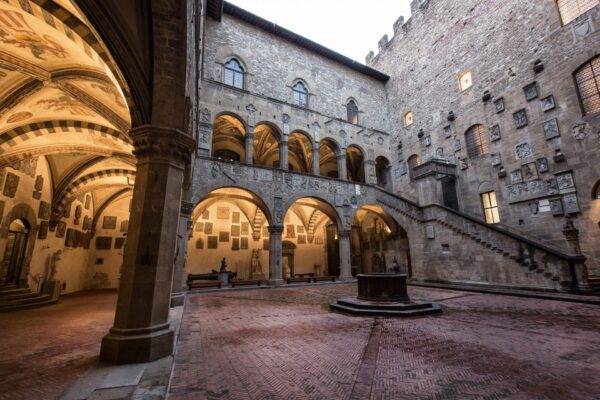
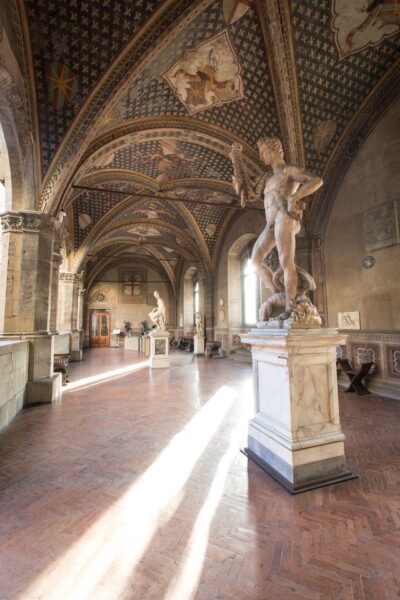
On the last floor, you will find a major collection of masterpieces by Andrea and Giovanni della Robbia, the Bronzes Room, the Verrocchio Room, the Medal Room, and the Armory Room which showcases pieces that survived the dispersion of the Medici Armory Collection.
With the recent reform of the Ministry, the museum was awarded autonomy resulting in its leadership over affiliating Florentine museums (Museo delle Cappelle Medicee, Museo di Palazzo Davanzati – Museo dell’Antica Casa fiorentina, Museo di Orsanmichele, and Museo di Casa Martelli).
The density of its artifacts and their immeasurable significance for mankind visiting this museum is a no-brainer. The fact that it’s considerably less crowded than the Palazzo Vecchio or the Uffizi Gallery makes the visit even more pleasurable. Description of the museum / More http://www.bargellomusei.beniculturali.it/musei/1/bargello/)
